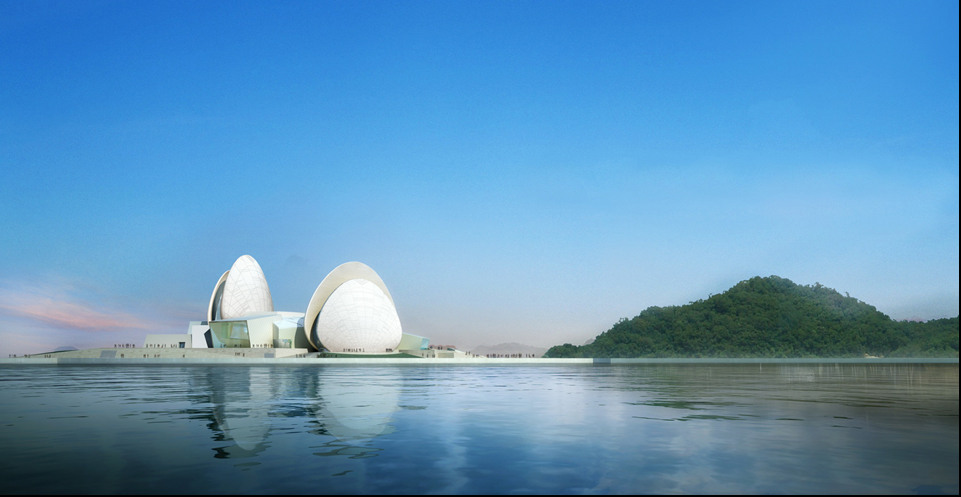China’s newest opera house, just opened in the coastal city of Zhuhai, was inspired by seafood and a Roman goddess, and will show what’s going on inside to people outside with projections on its huge shell.
The design for the 90m-high "Birth of Venus" venue, by Shenzhen architect Chen Keshi, beat stiff competition from international firms, and almost lost out to an American entry.
Vice-president of the Urban Design Centre of Peking University, Keshi, who also runs his own design company in Shenzhen, got his idea of using "moon shells" from Sandro Botticelli’s painting, Birth of Venus.
It was chosen after three judging sessions that lasted 12 months, beating off competition from 33 major architects, including many with a track record of tackling big cultural statements, such as Herzog & de Meuron and Paul Andreu.
The romantic and classical forms of the building were something of a surprise from Chen, who was best known in Chinese circles as the designer of an ultra-modernist set of skyscrapers in Shenzhen.
Chen told the Peking University website how he came up with the concept. He said: "I was standing on the shore in Zhuhai, and the first idea that came to me was the sun rising over the eastern sea. But the building needed two parts, so I thought of the moon shining over the sea. However, you cannot have the sun and the moon in the sky at the same time … then I thought of the painting of The Birth of Venus".

The building is only China’s second coastal opera house (Chen Keshi)
The specific biological form used for the design was amusium pleuronectes, a bivalve known to Pearl River Delta fishermen as the "moon scallop".
According to the Chinese press, this "moon-shell strategy" went down well with officials at the Zhuhai Headquarters of Important Cultural Projects Construction. They thought the opera house would be "a cultural symbol of the city" in future, and that it expressed "regionality, artistry and originality in architecture".
The officials and their judging panel reduced the final designs to three and asked the people of Zhuhai to choose a winner. They actually picked a US entry, however one voter claimed that it was a copy of a memorial museum in Hawaii, so it was dropped and Chen’s concept won.
The opera house is built on a 57,700 square metre plot of reclaimed land on Yeli Island, opposite the city’s main seafront. The larger of its two shells houses a 1,550-seat concert hall, a lobby, an auditorium and a stage. The smaller rises 60m and contains a 500-seat theatre.

Venus was actually born near Cyprus as a result of the castration of Uranus, god of the sky
According to the Macauhub website the structure comprises 10,000 tonnes of thin steel, which took 400 days to transform into the two shells.
The facade of the larger shell is covered with an LED lighting system that projects live operas on the outside of the building. The big hall will host large-scale performances such as symphonies, chamber music, operas, ballets, musicals and plays. The smaller theatre will host artistic events, fashion shows, art promotions and corporate meetings.
Chen, who also holds a social sciences degree from Edinburgh University, greeted the completed building with enthusiasm. He said: "I am delighted that it has been completed. It is of inestimable value to Zhuhai and will make the city internationally famous. It will become a symbol of the city, like the Sydney Opera House, attracting many tourists as well as lovers of opera. It will be there forever."
The price of the building was 1bn yuan ($160m).
Main image: An image of the stage is shown on the concave shell using LED lights (Chen Keshi)










